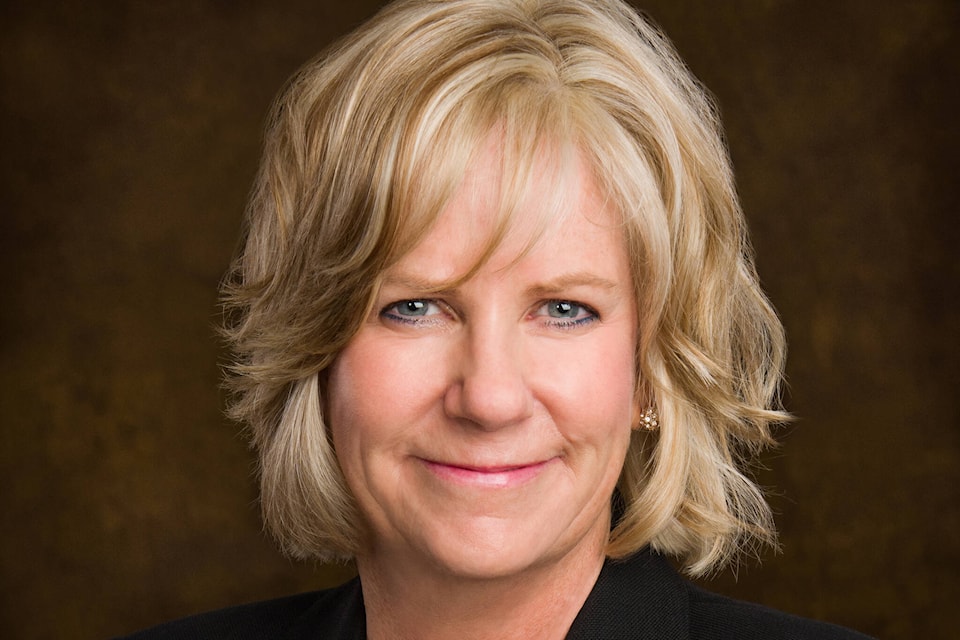Interior Health continues to grapple with staffing challenges and elective surgery postponements as the latest Omicron wave peaks and recedes in some areas of the region.
The regional health authority staffing challenges include the loss of approximately 895 health care staff — approximately four per cent — that did not comply with the provincial mandate to get vaccinated against COVID-19.
The Okanagan region was the hardest hit, losing 426 employees, while Thompson/Cariboo/Shuswap lost 230, Kootenay-Boundary lost 111 and the East Kootenay lost 88, according to Interior Health (IH). An additional loss of 60 workers is classified as regional.
Susan Brown, president and CEO of IH, highlighted the importance of getting vaccinated to protect patients, pointing to the region’s significant population percentage of seniors.
“We are really sad that we had to lose those people, but as you know, it’s for the protection of the people that we serve and it’s the right thing to do,” Brown said.
Additionally, hundreds of employees are calling in sick daily, with one-third of those illness-related absences due to Omicron, according to Brown.
“Our staff sick calls are far beyond what we’ve ever seen in a respiratory, flu, cold-like season,” said Brown. “So peaking to almost 900 a day at the worst times and 800 a day on an average — one-third of that is related to Omicron, so you can see that almost 33 per cent of that was greater than what we would anticipate on any other given year and day.”
Those challenges are being felt at hospitals across the Interior.
Kelowna General Hospital is currently at 115 per cent capacity, with approximately 70 COVID-19 patients, stated Brown.
Royal Inland Hospital in Kamloops is also facing pressures, running near 100 per cent capacity, however, 14 new beds associated with a new tower currently under construction are already operational, and 28 student nurses have been given offers to join RIH staff.
“We’ve got some areas where we know that we have to have really strengthened recruitment, but really there’s a need throughout the whole of the Interior,” Brown said. “That’s exactly why we put a recruiter right in Kamloops into RIH to help really strengthen there. Because when RIH doesn’t fare well, it really pulls from staff in the surrounding areas in the west, so it can cause instability around them.”
In Cranbrook, the East Kootenay Regional Hospital (EKRH) is running at, or near, 100 per cent capacity in recent weeks, which has resulted in longer than normal stays in the emergency department and pressures within the site, according to Interior Health. At any given time over the last few weeks and months, EKRH has had between four and six COVID-19 hospitalizations, as well as between two to seven people with COVID-19 in the Intensive Care Unit.
“I think they’re doing okay, compared to some of the other areas that we’ll continue to monitor across everywhere in the Interior,” Brown said.
Aside from an aggressive recruitment campaign for health care workers such as nurses and doctors, Brown added that IH is also looking to add positions in areas such as human resources management, information technology and finance.
Brown said that nursing students in the region are being given the opportunity to specialize in their fourth year of post-secondary education, as a way to fast track into various hospital departments, and every nursing student graduating in the spring or the fall is being offered a job.
On Jan. 19, the health authority announced a four-week service reduction initiative, postponing elective surgeries and redeploying staff in response to managing the Omicron wave fallout.
Since then, approximately 1,200 elective surgeries have been postponed, with an estimated postponement of 2,700 elective surgeries expected throughout the four-week program. However, Brown also estimated that 2,800 surgeries urgent in nature will be done over the same time period.
The larger the hospital site, the larger the number of postponed surgeries, said Brown, meaning the bulk of them are likely occurring in the Okanagan at places such as Kelowna General Hospital and Royal Inland Hospital.
Brown is hopeful that the service reductions won’t last beyond the intended four-week plan.
“I do believe we have peaked now where we saw the sick calls and also our positivity rates are starting to come down slightly,” Brown said. “So, I hope we’re over that peak now and this would be looking towards the next week or two getting back to usual service.”
